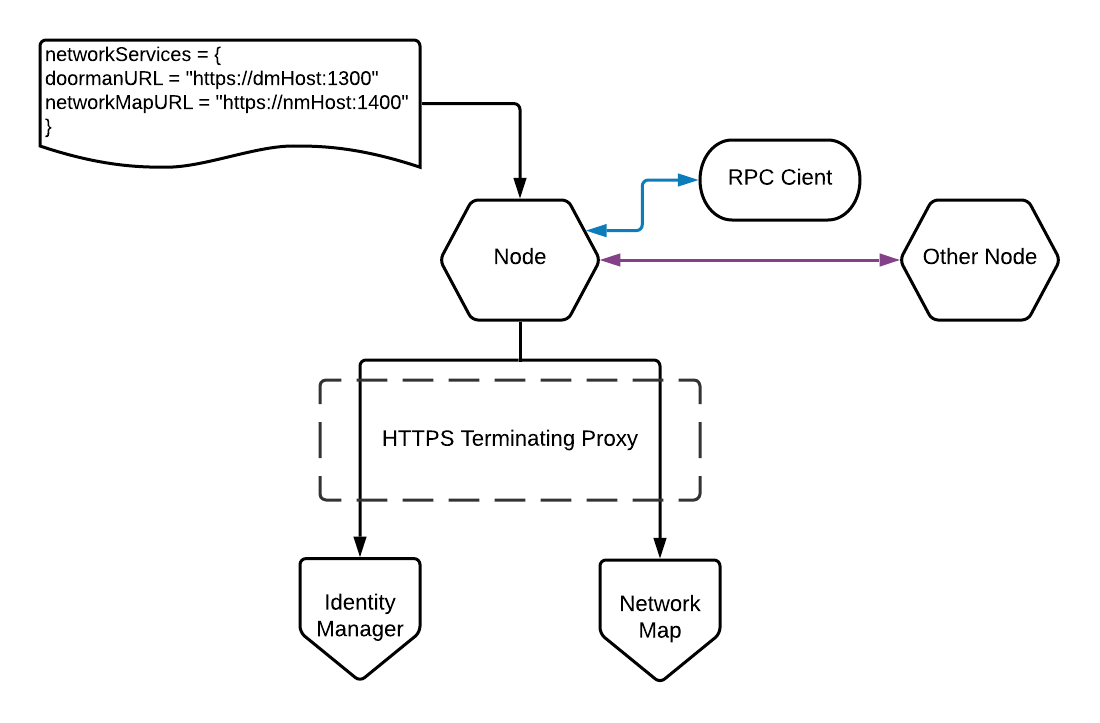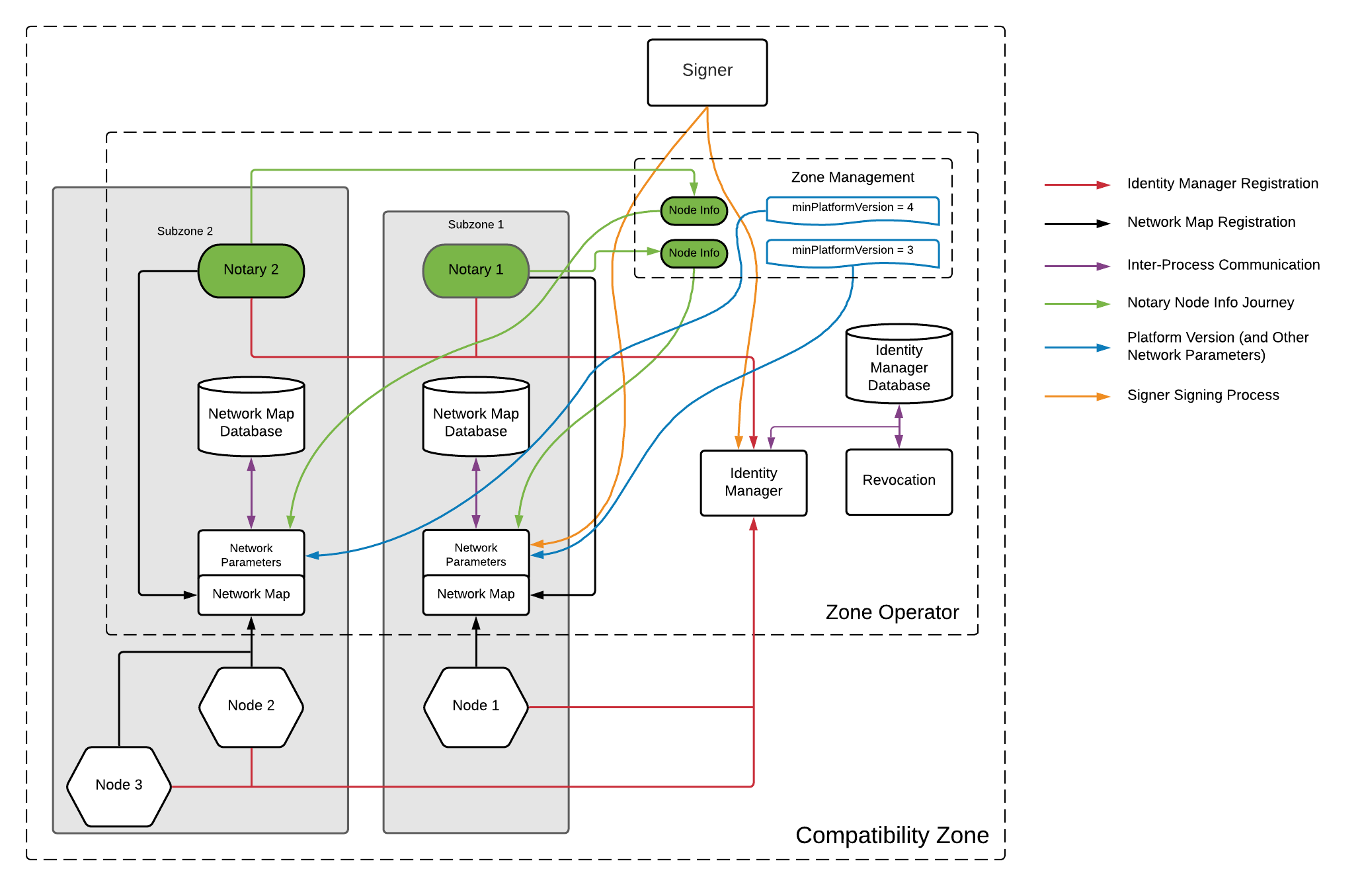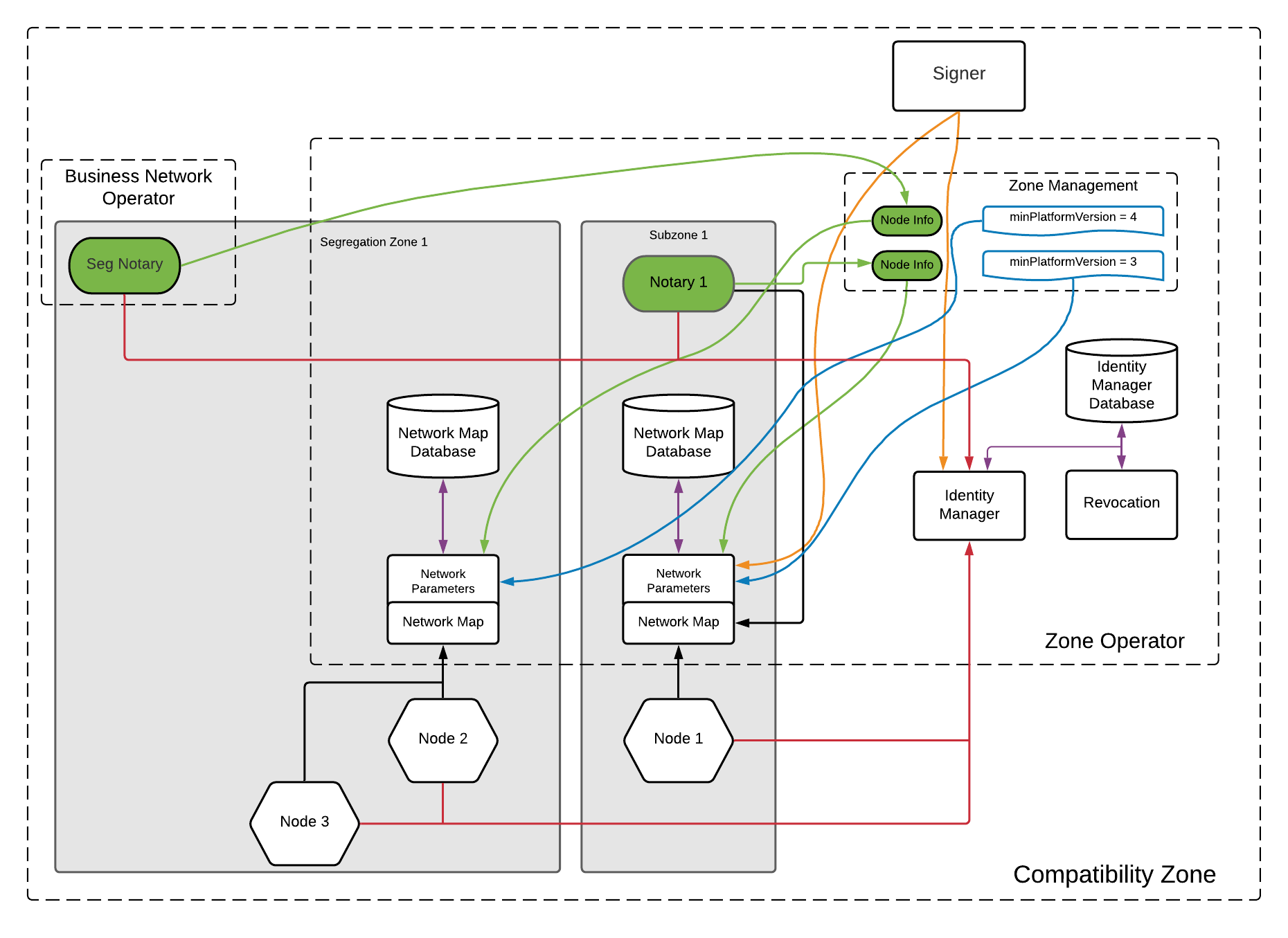Subzones
Network from a Node’s Perspective

From the perspective of a node, a network is defined by the Identity Manager and Network Map Services it is configured to connect to. It has no comprehension of subzones. It simply connects to the services configured within its configuration file and, once registered with both, interacts with other nodes and the apps deployed upon it via the RPC clients. This is summarised below:

The node is unaware of other subzones - it sees only those nodes registered with the Network Map Service that it has also registered with itself.
Network from a Zone’s Perspective

From the perspective of the operator of that zone however, things are a lot more interesting:

In this example the zone operator is operating two public subzones, each with a different minimum platform version (the other network parameters shared by the two zones are omitted for brevity). Each subzone has a single notary, operated by the zone operator, whose node info is included in the whitelist of the network parameters representing that zone.
A zone always has only one instance of Signer. Multiple subzones can have different network maps but all share the same Signer and Identity Manager. Signer signs:
- Certificate signing requests from the Identity Manager,
- Changes to the network parameters,
- Updates to the network map.
Interesting features:
- All nodes are registered with the zone’s Identity Manager Service. This includes the notaries.
- Each subzone is represented by a network map, each with its own database and network parameters file.
- Node 1 is on the “older” subzone using a minimum platform version of 3. It is unaware that Nodes 2 and 3 even exist (just as they are unaware of it) but can use Notary 1.
- Nodes 2 and 3 and Notary 2 can all intercommunicate as one would expect.
Segregated Subzones

The fundamental difference between a public subzone and a segregated one is that the operation of the notaries is deferred to a third party. The relationship between the zone operator and the notary operator is left to the discretion of the zone operator.
This is shown in the following diagram:

Was this page helpful?
Thanks for your feedback!
Chat with us
Chat with us on our #docs channel on slack. You can also join a lot of other slack channels there and have access to 1-on-1 communication with members of the R3 team and the online community.
Propose documentation improvements directly
Help us to improve the docs by contributing directly. It's simple - just fork this repository and raise a PR of your own - R3's Technical Writers will review it and apply the relevant suggestions.
We're sorry this page wasn't helpful. Let us know how we can make it better!
Chat with us
Chat with us on our #docs channel on slack. You can also join a lot of other slack channels there and have access to 1-on-1 communication with members of the R3 team and the online community.
Create an issue
Create a new GitHub issue in this repository - submit technical feedback, draw attention to a potential documentation bug, or share ideas for improvement and general feedback.
Propose documentation improvements directly
Help us to improve the docs by contributing directly. It's simple - just fork this repository and raise a PR of your own - R3's Technical Writers will review it and apply the relevant suggestions.